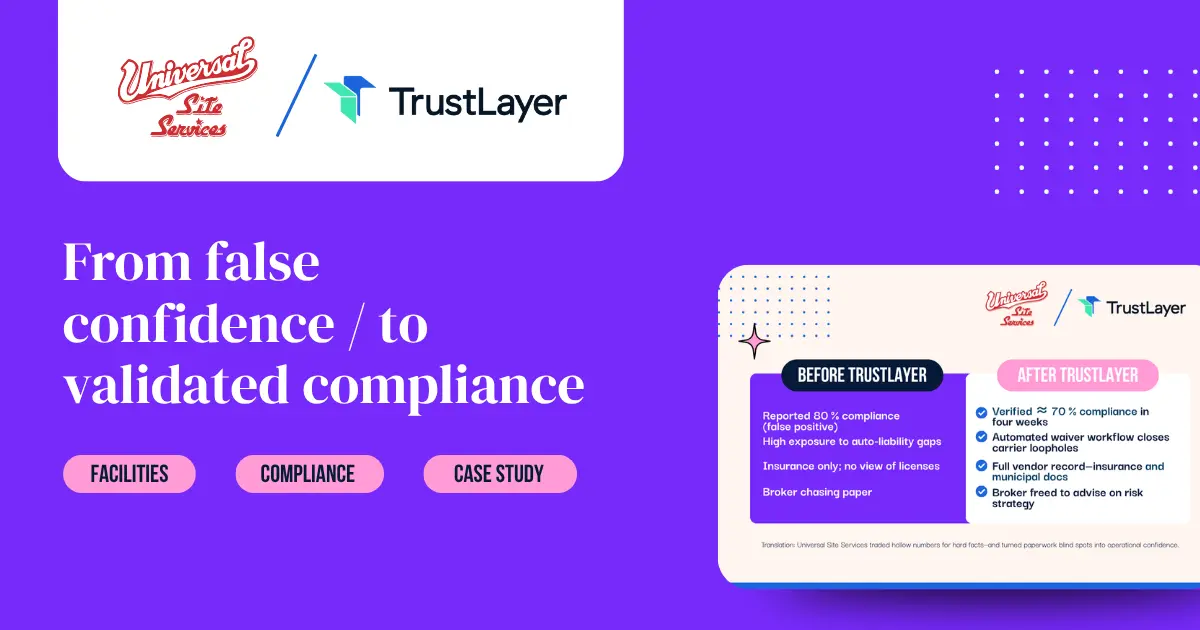What is the Difference Between Indemnification and Insurance?

In the realm of risk management and financial protection, terms such as indemnification and insurance frequently arise. While they are related concepts, they serve different purposes and operate in distinct ways. Understanding these differences can help individuals and businesses navigate their responsibilities and protections in various situations.
Understanding Indemnification
Indemnification refers to a contractual agreement between two parties where one party agrees to compensate the other for certain damages or losses. This agreement is often used to allocate risk and protect one party from the financial consequences of specific events. The concept of indemnification is rooted in the desire to create a safety net for parties involved in potentially high-risk transactions, ensuring that neither party bears the full burden of unforeseen liabilities.
The Mechanics of Indemnification
In practice, indemnification typically involves a promise to cover costs arising from claims, lawsuits, or damages. For example, suppose a contractor is hired to perform work on a property. In that case, the contractor may agree to indemnify the property owner against any damages that result from the contractor's actions. This means that if a third party sues the property owner due to a mishap caused by the contractor, the contractor would be responsible for covering the legal costs and any damages awarded. This arrangement not only protects the property owner but also incentivizes the contractor to perform their work diligently and responsibly, knowing they could be held accountable for any negligence.
Indemnification can be broad or limited, depending on the terms outlined in the contract. Broad indemnification might cover all possible claims, while limited indemnification could specify certain types of claims or damages that are covered. This flexibility allows parties to tailor indemnification agreements to their specific needs and risks. For instance, in a technology licensing agreement, a software developer might agree to indemnify a client against any claims of intellectual property infringement, thereby providing the client with peace of mind as they use the software in their operations.
Types of Indemnification
There are generally two types of indemnification: express and implied. Express indemnification is explicitly stated in a contract, with clear terms outlining the responsibilities of each party. On the other hand, implied indemnification arises from the nature of the relationship between the parties or the circumstances of the situation, even if not formally documented. This can often lead to disputes if the expectations of indemnification are not communicated or understood.
For instance, in many employment relationships, an employer may be expected to indemnify employees for actions taken within the scope of their job duties. This is often seen in cases where employees face legal action for decisions made while performing their work responsibilities. Moreover, specific industries, such as construction or healthcare, may have additional regulations that further define indemnification obligations, ensuring that employees are protected while they perform their roles. Understanding these nuances is crucial for both employers and employees to navigate potential liabilities effectively and maintain a harmonious working environment.
Exploring Insurance
Insurance, in contrast to indemnification, is a financial product purchased to protect against specific risks. It involves paying premiums to an insurance company in exchange for coverage against potential losses. Insurance can cover a wide range of risks, including health, property, liability, and other related expenses.
The Role of Insurance in Risk Management
Insurance serves as a safety net, allowing individuals and businesses to transfer the risk of financial loss to an insurance provider. For example, a homeowner may purchase property insurance to protect against damages caused by fire, theft, or natural disasters. In the event of a covered loss, the insurance company will compensate the homeowner for the damages, up to the policy limits.
One of the key features of insurance is the pooling of risk. Insurance companies collect premiums from many policyholders and use the pooled funds to pay for claims. This system allows individuals to share the financial burden of unexpected events, making it more manageable for everyone involved. Additionally, the concept of risk assessment plays a crucial role in determining premium rates. Insurers evaluate various factors, such as age, health status, and location, to calculate the likelihood of a claim being made, which ultimately influences the cost of coverage.
Types of Insurance Policies
There are numerous types of insurance policies available, each designed to cover specific risks and liabilities. Common types include:
- Health Insurance: Covers medical expenses and healthcare services.
- Auto Insurance: Provides coverage for damages to vehicles and liability for accidents.
- Homeowners Insurance: Protects against damages to a home and personal property.
- Liability Insurance: Offers protection against claims resulting from injuries or damages to others.
Each type of insurance policy comes with its terms, conditions, and exclusions, making it essential for policyholders to understand what is covered and what is not. Furthermore, many insurance companies offer additional endorsements or riders that can be added to a standard policy for enhanced protection. For instance, a homeowner might consider adding flood insurance or earthquake coverage, which are often not included in standard homeowners policies. This flexibility enables individuals to tailor their coverage to suit their unique needs and circumstances better.
Moreover, the insurance landscape is continually evolving, influenced by advancements in technology and shifting societal needs. The rise of telematics in auto insurance allows insurers to monitor driving behavior through mobile apps or devices installed in vehicles, potentially leading to personalized premium rates based on actual driving habits. Similarly, the growing emphasis on health and wellness has led to the development of policies that reward individuals for maintaining healthy lifestyles, such as discounts for regular exercise or preventive care visits. These innovations not only enhance the customer experience but also promote a more proactive approach to risk management.
Key Differences Between Indemnification and Insurance
While both indemnification and insurance aim to protect against financial loss, there are several key differences between the two concepts. Understanding these differences can clarify their roles in risk management.
Nature of Protection
The primary distinction lies in how protection is provided. Indemnification is a contractual obligation, meaning it is enforced through agreements between parties. If one party fails to fulfill its indemnification obligations, the other party may seek legal recourse to enforce the contract.
In contrast, insurance is a product purchased from an insurance company. When a policyholder experiences a covered loss, they file a claim with the insurer, which then assesses the claim and provides compensation according to the policy terms. This process does not typically involve a contractual relationship between the insured and the insurer in the same way as indemnification. The insurer's obligation is to adhere to the terms of the policy, which can often lead to disputes over coverage and claims, especially when the policyholder does not clearly understand the terms.
Scope of Coverage
Indemnification agreements can be tailored to specific situations, allowing parties to define the scope of coverage based on their unique circumstances. This flexibility can be beneficial in complex business arrangements where risks may vary significantly. For instance, in construction contracts, indemnification clauses can specify which party is responsible for certain liabilities, such as damages arising from negligence or breach of contract, thereby allowing for a more customized risk management strategy.
On the other hand, insurance policies are standardized products that cover specific risks outlined in the policy. While there are various options available, policyholders must choose from the coverage options provided by the insurance company, which may not always align perfectly with their specific needs. Additionally, the language used in insurance policies can be complex and filled with jargon, making it crucial for policyholders to fully understand their coverage limits and exclusions to avoid unexpected gaps in protection during a claim.
Cost Implications
Indemnification typically does not involve direct costs unless a claim is made. The party providing indemnification may incur costs only when a loss occurs, making it a potentially less expensive option for managing certain risks. However, this can also lead to uncertainty, as the total cost of indemnification is unpredictable and contingent upon future events that may or may not occur.
Insurance, however, requires regular premium payments, which can add up over time. While these payments provide peace of mind and financial protection, they represent a fixed cost that must be budgeted for, regardless of whether a claim is filed. Moreover, the cost of insurance can vary significantly based on factors such as the type of coverage, the insured's risk profile, and market conditions. This variability can make it challenging for businesses to accurately forecast their insurance expenses, necessitating careful planning and consideration of their overall risk management strategy.
When to Use Indemnification vs. Insurance
Determining when to rely on indemnification versus insurance depends on the specific circumstances and the nature of the risks involved. Both tools can be used effectively in different scenarios.
Indemnification in Business Contracts
Indemnification is particularly common in business contracts, where parties seek to allocate risks associated with certain activities. For instance, in construction contracts, indemnification clauses are often included to protect property owners from liabilities arising from the contractor's work.
Businesses may also use indemnification in vendor agreements, service contracts, and partnerships, where one party may be exposed to risks due to the actions of another. By including indemnification clauses, businesses can clarify responsibilities and reduce potential liabilities. This proactive approach not only fosters a sense of security but also encourages transparency between parties, as they must fully disclose potential risks and liabilities before agreeing. Furthermore, indemnification can be tailored to specific situations, allowing businesses to negotiate terms that reflect their unique operational environments and risk appetites.
Insurance for Personal Protection
For individuals, insurance often serves as the primary means of financial protection. Health insurance, auto insurance, and homeowners insurance are essential products that help manage risks associated with everyday life. These policies provide a safety net against unexpected events, allowing individuals to recover from losses without facing significant financial hardship.
In many cases, individuals may not have the option to negotiate indemnification agreements, making insurance the more practical choice for personal risk management. Moreover, the landscape of personal insurance has undergone significant evolution, with numerous options now available to cater to diverse needs. For example, renters' insurance can protect personal belongings in a leased space. In contrast, life insurance offers peace of mind for families by providing financial support in the event of a tragic loss. Additionally, as technology advances, new forms of insurance, such as cyber liability insurance, are emerging to address the unique risks posed by the digital age, further broadening the scope of personal protection available to individuals.
Conclusion
Indemnification and insurance are both valuable tools in risk management, serving distinct purposes. Indemnification is a contractual agreement that allocates risk between parties, while insurance is a financial product that provides coverage against specific risks in exchange for premium payments.
Understanding the differences between these two concepts can empower individuals and businesses to make informed decisions about how to protect themselves from potential losses. Whether through contractual agreements or insurance policies, effective risk management is essential for navigating the uncertainties of life and business.
Ultimately, both indemnification and insurance play crucial roles in safeguarding assets and ensuring financial stability. By recognizing the unique features and applications of each, stakeholders can better prepare for the unexpected and mitigate potential risks.
As you consider the intricacies of indemnification and insurance in your risk management strategy, remember that the modern risk manager thrives with innovative tools at their disposal. TrustLayer is revolutionizing the way companies manage certificates of insurance (COIs), streamlining the verification process and alleviating administrative burdens. Embrace the future of risk management and join the hundreds of thousands of companies that have already chosen TrustLayer for their Certificate of Insurance (COI) tracking and vendor document management needs. Don't let outdated processes hold you back. Set up a time to talk with our team and discover how TrustLayer can transform your risk management practices.
















